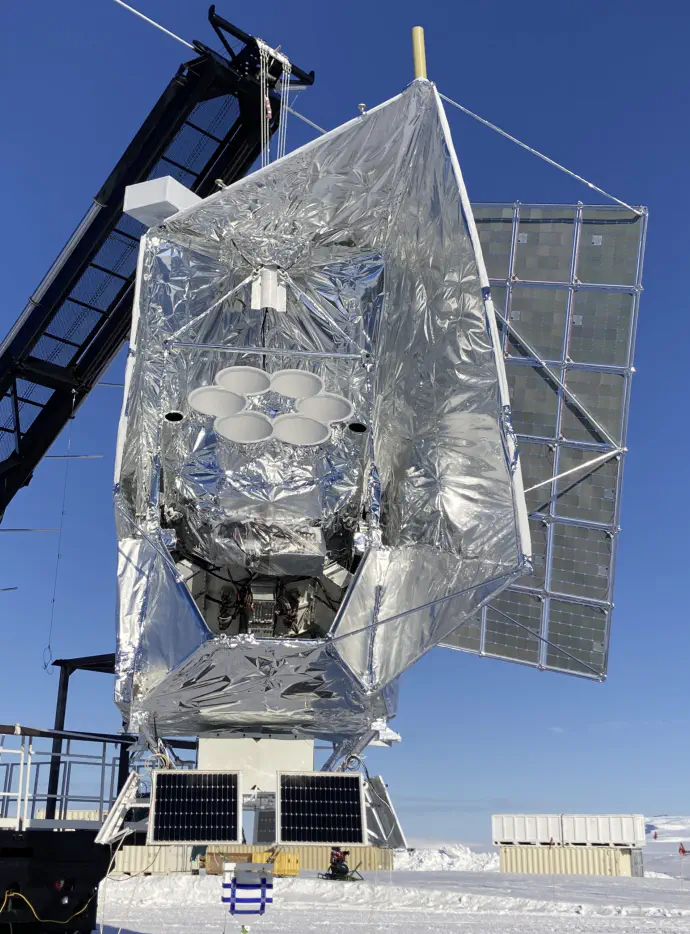 Image credit: Figure 2
Image credit: Figure 2Abstract
SPIDER is a balloon-borne instrument designed to map the cosmic microwave background at degree-angular scales in the presence of Galactic foregrounds. SPIDER has mapped a large sky area in the Southern Hemisphere using more than 2000 transition-edge sensors (TESs) during two NASA Long Duration Balloon flights above the Antarctic continent. During its first flight in January 2015, SPIDER observed in the 95 GHz and 150 GHz frequency bands, setting constraints on the B-mode signature of primordial gravitational waves. Its second flight in the 2022-23 season added new receivers at 280 GHz, each using an array of TESs coupled to the sky through feedhorns formed from stacks of silicon wafers. These receivers are optimized to produce deep maps of polarized Galactic dust emission over a large sky area, providing a unique data set with lasting value to the field. In this work, we describe the instrument’s performance during SPIDER’s second flight.